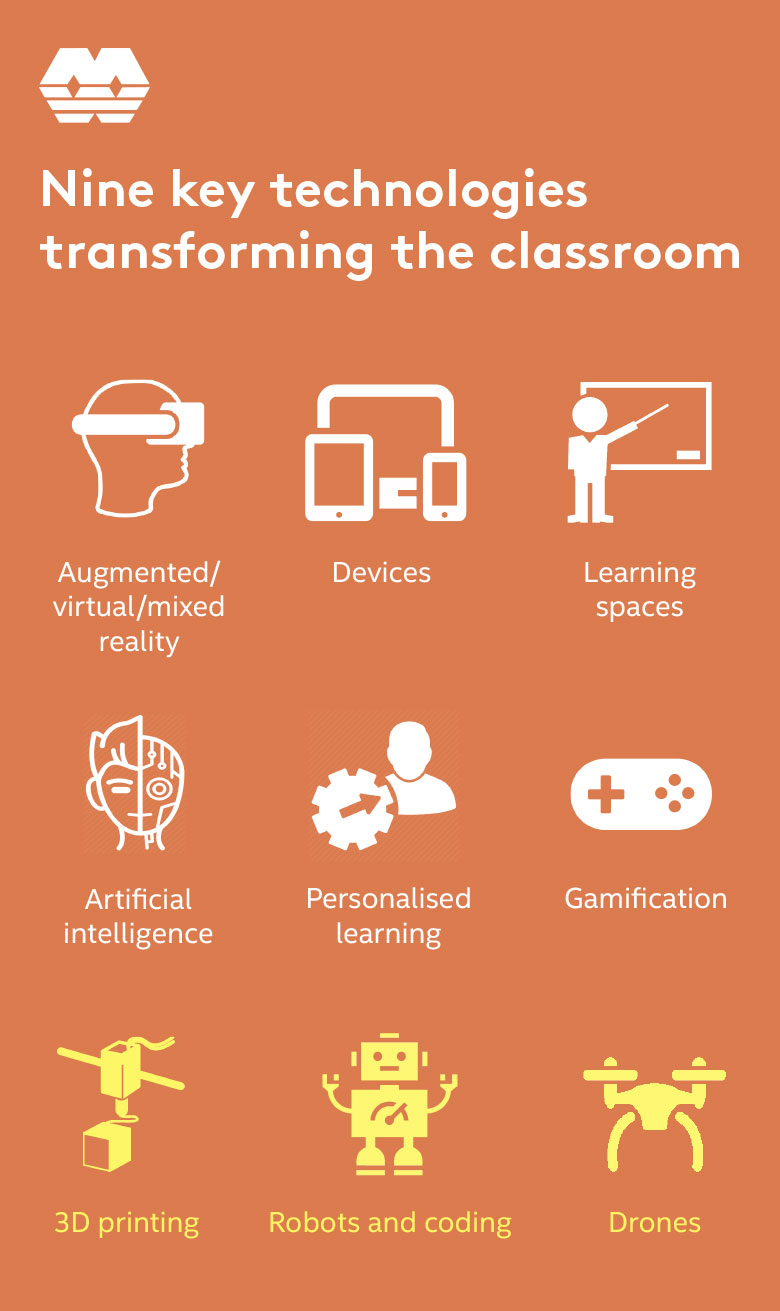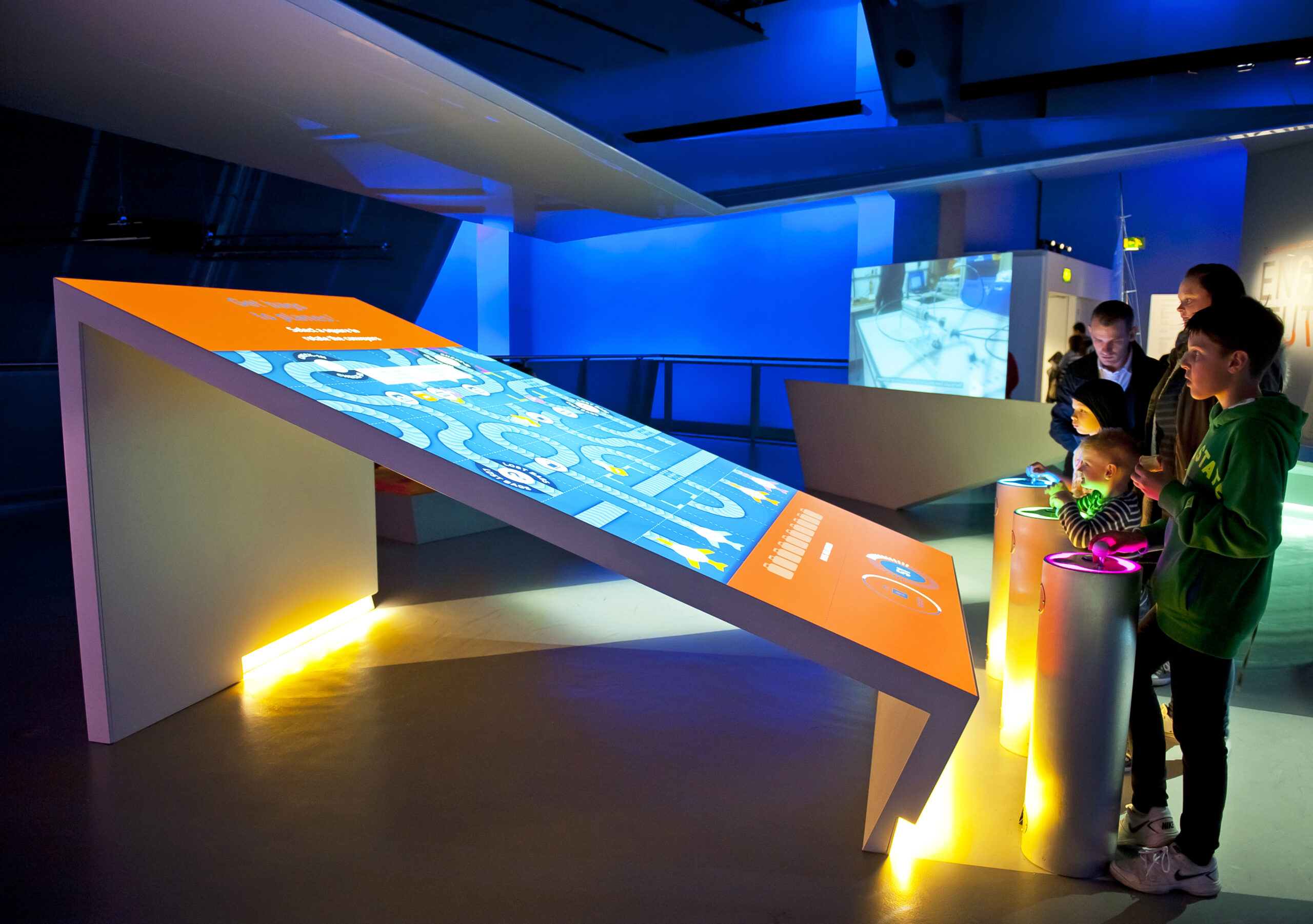With technology already transforming business and everyday life, it’s no surprise that it’s also having a major effect in the classroom and on education.
Today’s students are more tech-savvy than their parents were and teachers are leveraging all kinds of new technology to make the classroom experience immersive and engaging.
According to Forbes, there are six key technologies set to transform the classroom:
1. Augmented, virtual and mixed reality
Teachers can use augmented, virtual and mixed reality to create a whole new kind of lesson plan that draws students in and brings concepts to life to make them more accessible.
This can include letting students experience a virtual reality rollercoaster as part of a physics lesson or taking them on a virtual field trip to ancient Greece in a history class.
Students can deep-dive into molecular structures or compare the size of dinosaurs to the trees in the schoolyard.
The possibilities are unlimited!
2. Devices
Having devices freely available in the classroom without requiring students to bring their own makes digital literacy more accessible for children of all socio-economic backgrounds.
Students who leave school unfamiliar with technology or with the risks and responsibilities associated with it will lag behind their peers when it comes to further education, jobs and general life skills.
3. Learning spaces
Interactive whiteboards, more access to different devices and an advanced view of pedagogy are seeing classrooms transformed from rows of desks to interactive learning spaces that more closely mimic the workplace.
Collaboration and curiosity are encouraged in such spaces, better preparing students for the real world.
4. Artificial intelligence
Virtual assistants can help students navigate tricky concepts, freeing up teachers to spend valuable time with students who have higher needs.
AI is also creating opportunities for more personalised learning experiences, shifting the traditional learning environment.
5. Personalised learning
The education system has long been criticised for standardised testing and failing to make allowances for individual learning styles and abilities.
Technology, like blended learning, lets students direct their own learning to a certain extent, deciding on where and at what pace they move through the material.
Technology that analyses student behaviour and adapts the learning experiences accordingly can help students achieve better outcomes by playing to their strengths.
6. Gamification
Since the dawn of humanity, children have always learned through play.
This was stymied in classroom settings that demanded students sit still and listen, then learn facts and concepts by rote.
We are potentially reaching an enlightened age in education whereby play is re-introduced to the classroom and students experience a more immersive and engaging learning experience.
I bet you were thinking, why does the title of this blog mention nine technologies, but only listed the Forbes six key technologies…right?
Well, at Synnex Australia, we believe there are an additional three technologies that will also help transform learning experiences; 3D printing, robots and coding and drones.

7. 3D printing
3D printing has been in Australian classrooms for some time now, helping students come to grips with complex concepts.
Students benefit from the experience of designing objects for 3D printing, then seeing their concepts come to life.
Working with 3D-printed materials can help students by providing a visual representation that they can interact with.
This can assist in subjects like chemistry, where students can print molecules in 3D or history where they can print out models of historical artefacts.
There are very few subjects, if any, that couldn’t benefit from the addition of 3D printing.
8. Robots and coding
Robots have entered the classroom as a platform for teaching students how to code.
Small and simple robots can help even very young students learn concepts such as sequencing, estimation and problem-solving.
As students get older and more experienced, the robots also increase in complexity.
It’s been said that coding will be the next universal language and those looking to be successful in future workplaces should focus on learning how to code.
Teaching students coding through robots makes it fun and engaging.
Students get instant feedback since the robot either behaves according to their intentions or doesn’t, exposing a bug in the code that students must then fix themselves.
9. Drones
Part of the learning experience includes gaining different perspectives on information.
Drones let students do that in a literal way, leveraging their interest in technology to show them different ways of looking at the world.
For example, students could use footage from a drone to stimulate writing exercises.
They could map the path of a drone to learn about distance and time.
Simply flying a drone can help children improve their hand-eye coordination.
Drones could also be used to encourage students to participate in physical education classes by filming their movements and discussing them later.
The potential for technology to influence educational outcomes isn’t limited to these nine technologies.
As new and emerging technologies change the way we work and live, they will inevitably find their way into classrooms, preparing today’s students for tomorrow’s challenges.
To find out more about the learning technologies available at Synnex, contact us on marketing@au.synnex-grp.com.au


AI is changing the world and what better way to capitalise on this trend than with our next generation!
[…] in August, we explored 9 key technologies set to transform the […]